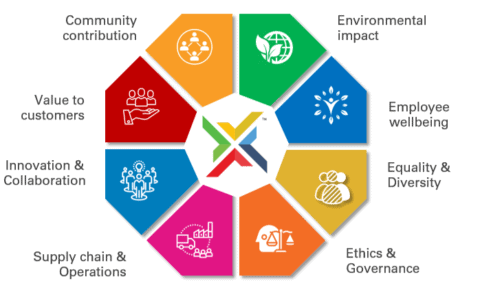‘Green teams’ often play a key role in leading sustainability initiatives within businesses, often using their discretionary time and efforts as champions for positive environmental change. However, maintaining momentum and fostering continued progress can pose challenges, particularly when teams have tackled all the “low-hanging” fruit.
In this blog, whether you call it a Green Team, Eco Committee or Sustainability Crew, we’ll explore actions to reenergise them, enabling them to continue with the momentum and continue to drive to achieve meaningful sustainability outcomes.
Navigating the Challenge: Starting Strong, Sustaining Momentum
While green teams typically start their initiatives with enthusiasm, maintaining this over time can prove challenging. One common obstacle is the lack of a clear roadmap for progress following the initial projects. Without guidance, experience and wider knowledge of the sustainability agenda on the team, this lack of achievement can lead to frustration among both team members and management.
Strategies to reinvigorate your Green Team:
1. Framework to check what you are focussing on the whole agenda.
Using a framework, such as the United Nations Sustainable Development Goals (UN SDGs), ensures that your green team considers all aspects of sustainability in its initiatives. Often the wider picture is forgotten! These frameworks provide a structure to guide your team. Looking at a Framework helps you to think wider and broader.
Some Framework examples include:
- UN SDGs
- Triple Bottom Line
- B Corp Certification
- or you could use ours…..

2. Identify the areas you can have the greatest impact.
Understanding your business’s biggest sustainability impacts allows your green team to focus resources where they will make the most significant difference. Typically, teams focus on energy consumption, waste generation, or water usage, but a great way to reset focus is to consider all the other aspects you might be able to have an impact.
Examples of impact that you might not have considered could include:
- Education: Assing the reach you have with your customer base and how you can support their education.
- Staff Commuting: Identifying areas for energy conservation and implementing energy-efficient practices.
- Supply Chain Practices: Evaluating suppliers’ sustainability practices and promoting sustainable sourcing.
3. What are others doing?
Learning from comparable businesses or competitors provides valuable insights and inspiration for your green team. You can identify innovative approaches and best practices to apply within your own business. For instance, observing how competitors are reducing their carbon footprint may inspire your team and provide ideas on this difficult topic.
Ideas for where to look:
- Industry Peers: Studying sustainability reports or initiatives from companies in the same sector.
- Competitors: Analysing competitor sustainability practices through publicly available information or industry conferences.
- Best Practices: Identifying successful sustainability initiatives implemented by larger businesses in relevant sectors.
4. How do you know you are spending time in the right areas?
Engaging key stakeholders ensures that your green team’s efforts are aligned with the priorities and expectations of those most affected in your business. By involving customers, investors, management, and employees in decision-making processes, your team can gain valuable perspectives and insights into sustainability priorities.
Some ways to involve your stakeholders:
- Customers: Conducting surveys or focus groups to understand customer preferences for sustainable products
- Investors: Communicating sustainability initiatives and performance metrics to attract socially responsible investors.
- Employees: Implementing employee engagement programs to create a culture of sustainability.
5. How do you know you are making progress?
Establishing clear metrics and goals allows your green team to track progress and demonstrate the effectiveness of its efforts. For instance, setting targets for reducing greenhouse gas emissions or increasing employee engagement in sustainability initiatives provides a clear direction for action and enables your team to measure success and celebrate achievements.
Some key measures you could use include:
- Environmental Metrics: Tracking reductions in carbon emissions, water usage, or waste generation.
- Social Metrics: Monitoring improvements in employee well-being, community engagement, or diversity and inclusion.
- Economic Metrics: Measuring cost savings from energy efficiency initiatives or revenue generated from sustainable products or services.
In conclusion, revitalising green teams is essential for moving the dial on sustainable practices and driving positive outcomes. By implementing some of the ideas from above, leaders can support their green teams to overcome challenges, maintain momentum, and achieve lasting sustainability impact.
If you would like some direction of help to do this – get in touch with us at Rondi@sustainablex.co.uk